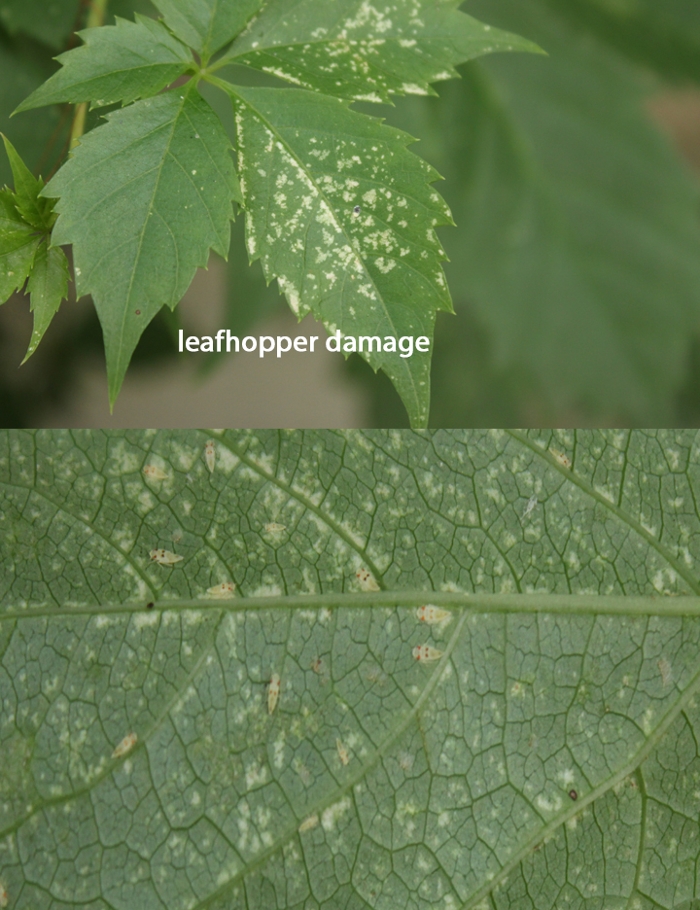
Leafhopper
Nuisance
Leafhoppers (Cicadellidae spp.) are a large and diverse group of winged, sucking insect that attacks many plants. Leafhoppers are common on Virginia creeper and green ash.
They can also be a problem on vegetable crops as the six-spotted leafhopper (Macrosteles quadrilineatus) may carry and transmit a disease called aster yellows. Aster yellows can affect carrots, celery, lettuce as well as flowering plants. For more information see: Aster yellows disease
Most leafhoppers migrate from southern regions of N. America on winds. Adults mate and lay eggs on the back of leaves. Both the adults and nymphs feed by sucking plant juices. The damage is usually seen in mid-summer as mottled white speckling in blotches or on the entire leaf. There can be more than one generation per year depending on weather conditions. Adult populations are usually killed off by cold.
The damage can be extensive and will weaken but seldom kill plants (unless they carry disease). Natural enemies of leafhoppers include several species of spiders, predatory mites, damselflies, lacewings and others.
Control:
- Spray leaves (including the underside) with a fine spray of plain water as you would aphids, to dislodge and disrupt. Repeat as needed. See: Using water to dislodge aphids
- Thin dense canopies of plants to encourage good air circulation, especially on dense vines.
- Avoid excess nitrogen on ornamental plants which causes tender growth and makes feeding easier for leafhoppers.
- Do not spray insecticides which will also kill beneficial predator insects.
Source:
Philip, H. G. (2018). Field crop and forage pests and their natural enemies in Western Canada: Identification and management. Saskatoon, Saskatchewan: Agriculture and Agri-Food Canada.

